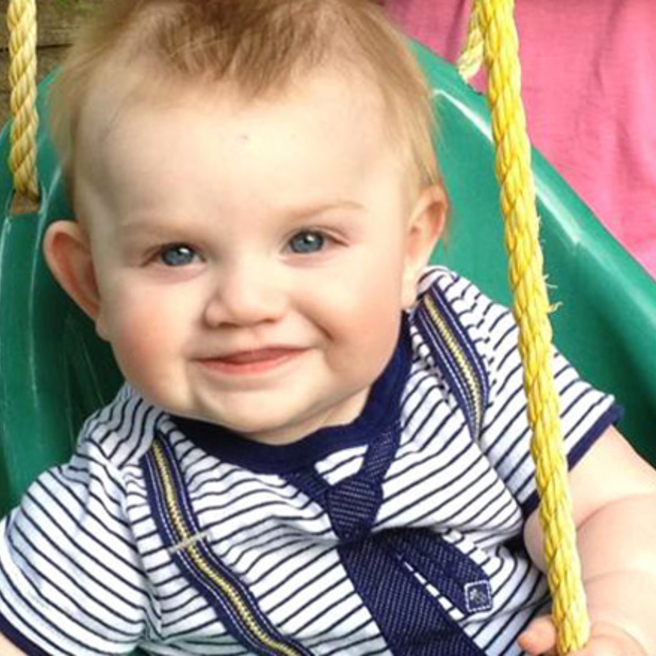What is prune belly syndrome?
Prune belly syndrome, also known as triad syndrome or Eagle-Barrett syndrome, is characterized by three abnormalities:
- Poor development of the abdominal muscles
- Undescended testicles
- An abnormal, expanded bladder
The urinary tract is significantly affected in virtually all children with prune belly syndrome. The bladder usually does not empty very well, and children must be monitored for the development of chronic kidney disease.
A child with prune belly syndrome may also have other birth defects. The skeletal system, lungs, intestines and heart are most commonly affected. Girls may have abnormalities in their external genitalia as well.
Causes
Prune belly syndrome is uncommon, occurring in approximately 1 in 30,000 to 40,000 live births. Boys make up the majority of the affected population, accounting for 95 percent of the cases.
The cause of prune belly syndrome is unknown; however, some cases have been reported in siblings, suggesting there may be a genetic component.
Prune belly syndrome develops as the fetus is growing before birth. One theory is that if a blockage develops in the urethra (the tube that drains urine from the bladder to the outside of the body) urine can build up in the bladder, causing pressure and forcing the bladder to stretch to the point where it does not work as well.
Signs and symptoms
Although children with prune belly syndrome often share common features, the severity of the symptoms can vary from mild to severe. The most common symptoms include:
- The abdomen has a wrinkled appearance, resembling the skin of a prune
- The muscles in the abdomen are usually undeveloped, which can make it difficult or impossible for a child to sit upright
- In boys, the testicles are usually undescended
- Urinary tract abnormalities:
- Urethral abnormalities including urethral hypoplasia
- The kidneys are often dilated with extra urine (hydronephrosis) and the kidney tissue may be poorly developed (dysplasia)
- The ureters are often dilated and tortuous (twisted), leading to a megaureter and vesicoureteral reflux (urine backing up into the kidney) may be present
- The bladder is usually large and trabeculated (irregularities in bladder wall)
Testing and diagnosis
Often prune belly syndrome is diagnosed during routine fetal ultrasounds. If not diagnosed prenatally, the distinctive appearance of the abdomen and the scrotal exam will usually lead to a quick diagnosis after birth. For children who do not have all of the common outward features of prune belly syndrome, the first sign of concern may be a urinary tract infection which would prompt further testing by your child's physician. Additional diagnostic procedures may include the following:
- Renal bladder ultrasound (RBUS): This procedure uses sound waves to outline the kidneys and bladder. It will enable us to see if any hydronephrosis is present and how large the bladder is.
- Voiding cystourethrogram (VCUG): A catheter (tube) is placed through your child’s urethra into the bladder. The tube will be used to slowly fill the bladder with a solution. While the bladder is being filled, a special machine (fluoroscopy) is used to take pictures. The radiologist looks to see if any of the solution is going back up into the kidneys. This study confirms the diagnosis of vesicoureteral reflux (VUR). Additional pictures are taken while your child is urinating. The radiologist will look at the urethra while urine is passing to be sure there is no blockage noted.
- MAG III renal scan: This study will be performed to determine how each kidney is functioning and the degree of blockage, if noted. An intravenous line (IV) is used to inject a special solution called an isotope into the veins. The isotope makes it possible to see the kidneys clearly. Pictures of the kidneys will be taken with a large X-ray machine that rotates around your child.
- MRI/MRU: MRI is a radiation-free diagnostic procedure that uses a combination of a large magnet, radiofrequencies and a computer to produce detailed images of the body. Magnetic resonance urography (MRU) creates detailed pictures of the kidneys, ureters and bladder.
- Video urodynamic study: This study evaluates how well your child’s bladder fills and empties. The goal of performing the test is to assess how well the bladder stores urine and how well it contracts to empty it. It will also test the function of the bladder outlet.
- Blood tests: to determine how well the kidneys are functioning.
Treatment
Treatment for prune belly syndrome will vary from one child to another depending on the severity of symptoms. If a child with prune belly syndrome has other birth defects, he will need to be followed by several specialties who will work together to provide the best care. We frequently work closely with our colleagues in Nephrology to preserve bladder and kidney drainage and function and to prevent urinary tract infections. Some common interventions include:
Antibiotic prophylaxis: A low, once-per-day dose of an antibiotic may be ordered to prevent a urinary tract infection.
Improve urinary drainage:
- Endoscopic evaluation: Some children may need the urologist to examine the urethra while they are under anesthesia in the operating room. The urologist will insert a cystoscope, a small device with a light and a camera lens at the end. He will use this instrument to make necessary incisions in the urethra that potentially could be causing an obstruction.
- Vesicostomy: A vesicostomy may be recommended to help facilitate emptying the bladder of urine. A vesicostomy provides an opening to the bladder, so that urine drains freely from the lower abdominal opening. During surgery, a small part of the bladder wall is turned inside out and sewn to the abdomen. The vesicostomy is a temporary option and can be closed in the future.
- Ureteral reimplantation: Ureteral reimplantation corrects the anatomical abnormality that allows urine to flow back into the ureter.
Preserving testicular function:
- Orchiopexy: If your son’s testicles are not descended into his scrotum by 6 months of age, we will recommend that they are surgically moved into the scrotum through a surgery called orchiopexy (also called orchidopexy). Generally a small incision is made in the groin area and in the scrotum. The testicle is pulled down and placed in a small pouch in the scrotum and attached with stitches. Since many boys with prune belly have testicles in the abdomen, this surgery may need to be done in a two-staged approach or at the time of the abdominal wall reconstruction.
Abdominal wall reconstruction: Reconstruction of the abdominal wall involves removal of the “prune-like” excess folds of skin and tightening of the abnormal muscles to create a smoother abdominal wall appearance.
Children with prune belly syndrome require careful observation throughout their lives. We will monitor your child’s bladder and kidney development and function on a regular basis.
Long-term care
As your child nears adulthood, our dedicated Urology Transitional Care Program is here to help you and your child prepare for the transition from pediatric to adult medical care. For patients with complex urologic conditions like prune belly syndrome, it is especially important that the care they receive remains effective and streamlined. Learn more about how this collaboration between CHOP and the Hospital of the University of Pennsylvania (HUP) can support you through this process.
Resources to help
Division of Urology Resources
Caring for a child with an illness or injury can be overwhelming. We have resources to help you find answers to your questions and feel confident in the care you are providing your child.

